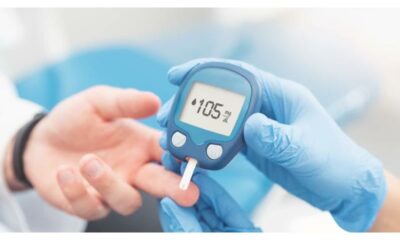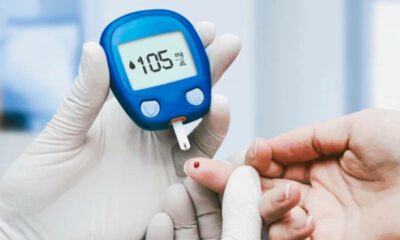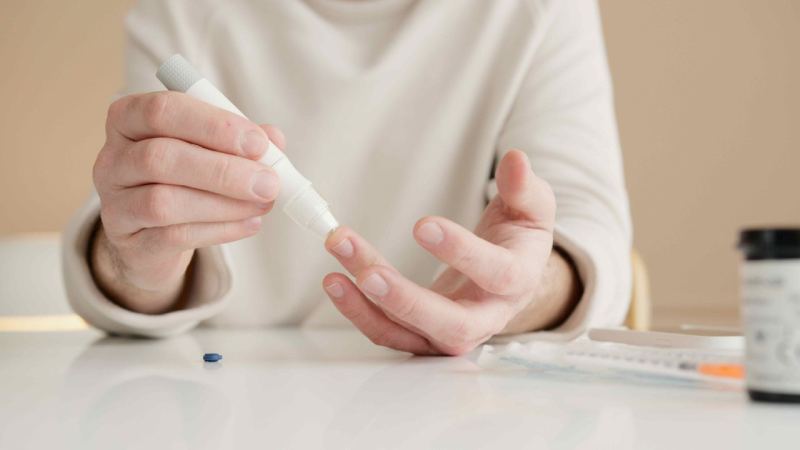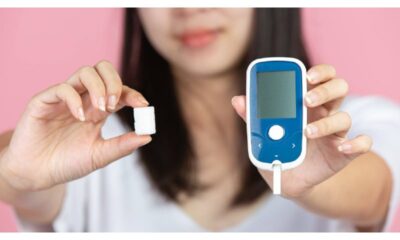Type 1 diabetes (T1D) is a lifelong autoimmune condition where the body doesn’t produce enough insulin, a hormone crucial for regulating blood sugar levels. This necessitates careful management to ensure optimal health and prevent complications. Regular blood sugar monitoring is the cornerstone of effective T1D management, empowering you to make informed decisions and achieve optimal blood sugar control.
Why Regular Monitoring Matters in T1D
Blood sugar levels in T1D can fluctuate significantly throughout the day due to various factors. Regular monitoring provides a clear picture of these fluctuations, allowing you to:
- Adjust Insulin Doses: By understanding how your body responds to food, exercise, and other factors, you can adjust your insulin dosage to match your current blood sugar level and needs. This helps maintain blood sugar within the target range, reducing the risk of both hyperglycemia (high blood sugar) and hypoglycemia (low blood sugar).
- Identify Trends and Patterns: Monitoring allows you to identify patterns in your blood sugar responses. You may notice certain foods or activities trigger spikes or dips, enabling you to adapt your diet, exercise routine, or medication regimen accordingly.
- Prevent Complications: Chronically high blood sugar levels are a major risk factor for long-term complications in T1D, such as neuropathy, nephropathy, retinopathy, and heart disease. Regular monitoring allows for early detection of hyperglycemia, enabling interventions to prevent or slow the progression of these complications.
- Recognize Hypoglycemia: Early detection of hypoglycemia is crucial for preventing serious health risks. Monitoring helps you identify symptoms like sweating, shakiness, and dizziness, allowing you to take corrective measures like consuming fast-acting carbohydrates to raise blood sugar levels.
- Make Informed Decisions: Every aspect of T1D management, from food choices to activity levels, becomes an informed decision when backed by blood sugar data. This empowers you to take control of your health and live a more active and fulfilling life.
Monitoring Methods for T1D
There are two primary methods for monitoring blood sugar in T1D:
- Blood Glucose Meters (BGMs): These portable devices require finger pricking to obtain a small blood sample. The meter analyzes the blood and displays your blood sugar level within seconds. BGMs are the most common and affordable monitoring method.
- Continuous Glucose Monitoring (CGM): These systems involve a small sensor inserted under the skin that continuously measures blood sugar levels in the interstitial fluid (fluid between cells) every few minutes. The sensor transmits data wirelessly to a receiver or smartphone app, providing real-time blood sugar trends and alerts for high or low levels. CGMs offer a more comprehensive picture of blood sugar fluctuations compared to BGMs.
Frequency of Blood Sugar Monitoring
The recommended frequency of blood sugar monitoring for T1D can vary depending on several factors, including:
- Blood Sugar Control: Individuals with good blood sugar control may need to monitor less frequently than those struggling with frequent highs or lows.
- Insulin Regimen: Those on complex insulin regimens, such as multiple daily injections or insulin pump therapy, may require more frequent monitoring to ensure adequate insulin coverage.
- Lifestyle Factors: Activity level, dietary choices, and stress can significantly impact blood sugar levels. Frequent monitoring can be helpful during periods of increased activity, changes in diet, or heightened stress.
- Pregnancy: Pregnant women with T1D require very strict blood sugar control to ensure the health of both mother and baby. Monitoring frequency is typically increased during pregnancy.
Developing a Personalized Monitoring Plan
Working with your healthcare team is crucial to develop a personalized monitoring plan that suits your individual needs and lifestyle. Here are some factors to consider:
- Your A1C level: This blood test reflects your average blood sugar control over the past 2-3 months. A higher A1C may necessitate more frequent monitoring.
- Your comfort level: Some individuals feel comfortable with frequent monitoring, while others may prefer a less invasive approach.
- Your lifestyle: Consider your daily routine, activity levels, and dietary habits when determining a monitoring schedule.
- Your access to technology: CGMs can be a valuable tool for some, but affordability and insurance coverage may be factors to consider.
Tips for Effective Blood Sugar Monitoring
Here are some pointers to ensure your blood sugar monitoring is accurate and effective:
- Wash your hands: Thoroughly wash your hands with soap and water before finger pricking to prevent infections.
- Use proper technique: Ensure you’re using the BGM and test strips correctly as per the manufacturer’s instructions.
- Rotate finger prick sites: Pricking the same finger repeatedly can cause discomfort. Rotate fingertip locations to avoid calluses.
- Calibrate your BGM: Regularly calibrate your BGM with control solutions to assure accurate readings.
- Document your results: Keep a record of your blood sugar readings, along with factors like food intake, exercise, and medication dosage. This helps identify trends and patterns.
- Discuss your data with your doctor: Regularly share your monitoring data with your healthcare team to adjust your treatment plan as needed.
- Stay motivated: Regular monitoring can feel tedious at times. Celebrate your successes and focus on the long-term benefits of good blood sugar control.
Living a Fulfilling Life with T1D
Regular blood sugar monitoring in T1D may seem like an additional burden, but it’s an empowering tool that allows you to take charge of your health. By understanding your blood sugar data and working with your healthcare team, you can achieve optimal blood sugar control, minimize the risk of complications, and live a vibrant and active life with T1D.
Remember, with consistent monitoring, knowledge, and support, you can successfully manage your T1D and live a fulfilling life.

 General Medicine2 weeks ago
General Medicine2 weeks ago
 General Medicine2 weeks ago
General Medicine2 weeks ago
 Diabetology7 days ago
Diabetology7 days ago
 Diabetology7 days ago
Diabetology7 days ago
 Diabetology5 days ago
Diabetology5 days ago
 Diabetology5 days ago
Diabetology5 days ago
 Diabetology7 days ago
Diabetology7 days ago
 Diabetology2 days ago
Diabetology2 days ago











